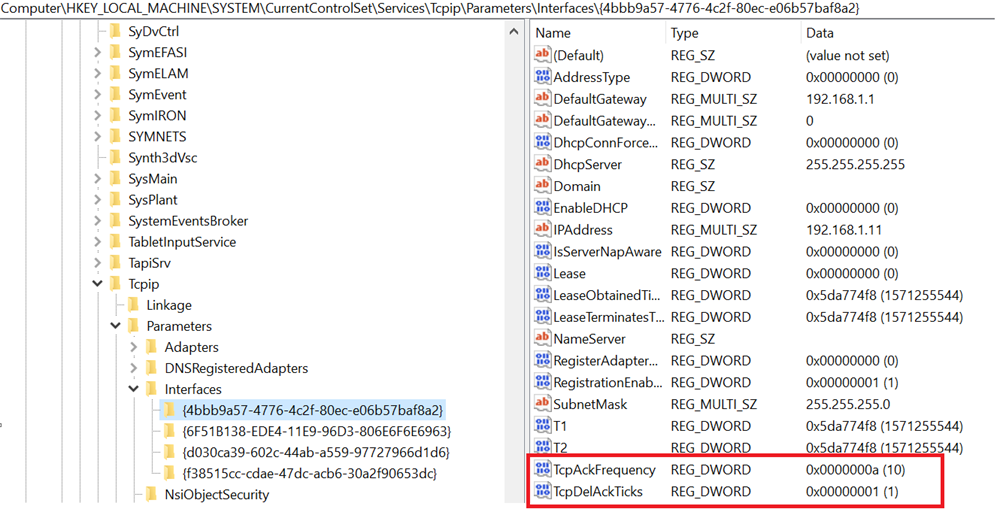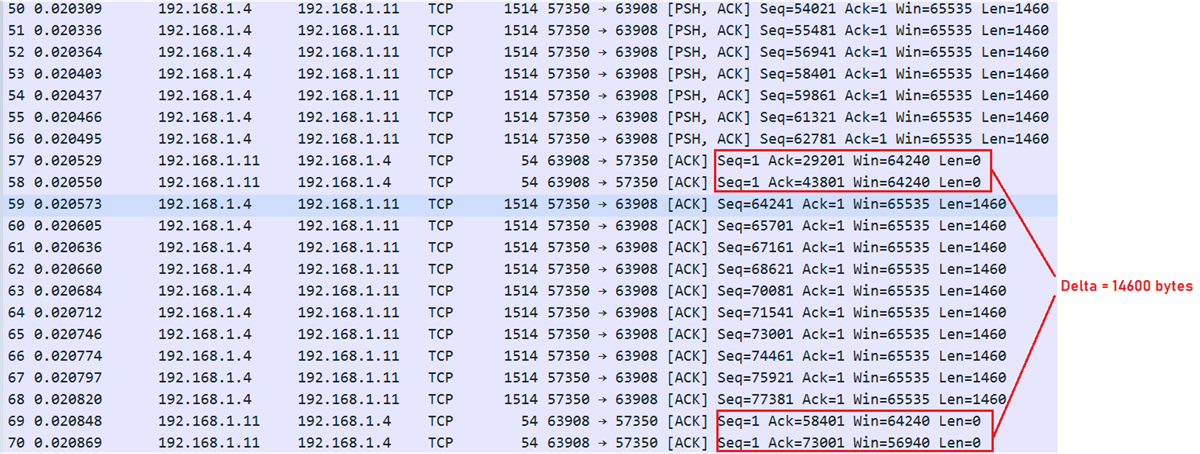SPRACT8 September 2020 66AK2H06 , 66AK2H12 , 66AK2H14
- Abstract
- Trademarks
- 1Introduction
- 2Hardware and Software
- 3Develop the FTP Server on K2H
- 4Performance Tuning
- 5Summary
- 6References
4.4.2 Receive Interrupt Coalescing Check
As shown from the packet capture, the data transfer size is 1514 bytes from the K2H EVM to the PC. The PC sends an ACK packet for every 2920 bytes (2 packets) received by examining the successive ACK packets’ acknowledge number field:
 Figure 4-9 Wireshark Analysis of ACK Packet
Frequency
Figure 4-9 Wireshark Analysis of ACK Packet
FrequencyThe frequent reception of TCP ACK packets drives up the CPU usage during receiving interrupt handling. The way to reduce the interrupt generation and hence the interrupt handling is called interrupt coalescing. It prevents interrupts from being raised to a CPU until a specific amount of events are pending. The CPU is relaxed and the throughput can be potentially increased with fewer interrupts.
Interrupt coalescing can be explored on either side, or both sides. From the Windows 10 PC side, if the generated TCP ACK packets can be suppressed to less frequent, then the K2H CPU saves the power for receiving interrupt handling. The interrupt coalescing is configured in the Windows 10 registry under Computer\HKEY_LOCAL_MACHINE\SYSTEM\CurrentControlSet\Services\Tcpip\Parameters\Interfaces\\{Interface_name}, one can use regedit utility to add two additional fields: TcpAckFrequency and TcpDelAckTicks. An ACK packet is transmitted every receiving number of TcpAckFrequency packets or when TcpDelAckTicks (in unit of 100 millisecond) delay timer expires, whichever happens first. An example is depicted below:
 Figure 4-10 Windows PC Interrupt Coalescing
Configuration
Figure 4-10 Windows PC Interrupt Coalescing
Configuration Those numbers are based on trials and the PC needs to reboot for the setting to take into effect. With TcpAckFrequency = 10 and TcpDelAckTicks = 1, the ACK is now transmitted for every 10 (from 2) received packets:
 Figure 4-11 Effect of Interrupt Coalescing
Setting on ACK Packet Generation
Figure 4-11 Effect of Interrupt Coalescing
Setting on ACK Packet Generation